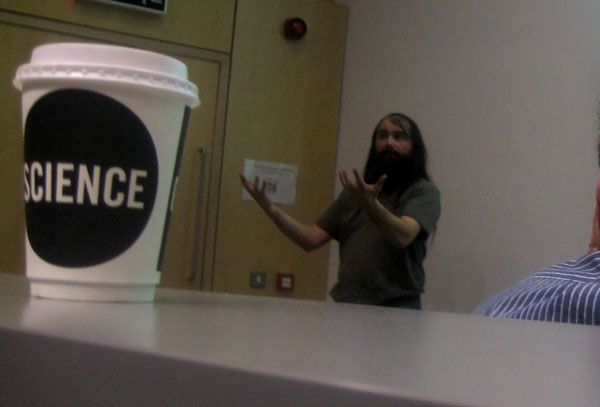|

FireFly - one thousand computers on a Christmas tree
Abstract
In this talk I will give a personal view of the state of HCI as a design discipline and as a scientific discipline and how this is changing in the face of new technological and social situations. Going back 20 years a frequent topic of discussion was whether HCI was a 'discipline'. It is unclear whether this was ever a fruitful topic, but academic disciplines are effectively about academic communities and the establishment of SIGCHI Ireland is yet another sign of the long-term stability of the international HCI/CHI community. However, as in computer 'science', the central scientific core of HCI is perhaps still unclear. A strength of HCI is the closeness between theory and practice, but the corresponding danger is that the two are often confused.
For twenty years the desktop GUI interface has been dominant, but in recent years the computer has 'escaped' the office desktop into the physical world of ubiquitous computing, into the virtual world of the internet, into our homes and our social lives. I will discuss one such change the move from a small number of applications used by many people to a 'long tail' of large numbers of applications used by small numbers of people. This change calls for different practical design strategies; focusing on the peak experience of a few rather than acceptable performance for many ... or as I sometimes refer to it 'Mars Bar vs. baked bean design'.
These changes are a challenge and an opportunity for new research and novel designs. However, as we see more diversity both in terms of types of systems and kinds of concerns, this may also be an opportunity to reflect on what is core across these; potential fragmentation becoming a locus to understand more clearly what defines HCI, not just for the things we see now, but for the future that we cannot see.
Bio
Alan Dix is Professor of Computing at Lancaster University. He has taught and researched in human-computer interaction (HCI) for over 20 years, has published over 300 articles and is author of one of the key textbooks in the area. He began as a mathematician at Cambridge University (and mathematics is still his first love) but moved into computing and HCI whilst doing his PhD at University of York. He has worked in several universities, agricultural engineering research, local government, hi-tech start-ups and even submarine design. His research interests are eclectic: formalisation and design, physicality and digitality, the economics of information, structure and creativity and the modelling of dreams. Recently he and a colleague have developed technology for autonomous pixels that can be configured to turn any surface or space into a two or three dimensional display.
Additional reading
- Dix, A., Finlay, J., Abowd, G., Beale, R.: Human-Computer Interaction, third edition. Prentice Hall, Harlow (2004)
Fariza's thesis:
- Fariza Hanis Abdul Razak (2008). Single Person Study: Methodological Issues. PhD Thesis. Computing Department, Lancaster University, UK. February 2008.
Some other peple's takes in what HCI is, will be, or might have been:
- Dan Diaper and Colston Sanger (2006). Tasks for and tasks in human–computer interaction. Interacting with Computers 18:117–138
- Yvonne Rogers (2004). New theoretical approaches for human-computer interaction. Annual Review of Information Science and Technology, 38(1): 87-143.
- Brad Myers, Jim Hollan, Isabel Cruz, et al. (1996). Strategic directions in human-computer interaction. ACM Computer Surveys. 28(4):794-809.
- Brad Myers (1998). A brief history of human-computer interaction technology. interactions 5(2):44-54.
- R. Harper, T. Rodden, Y. Rogers, A. Sellen (2008) Being Human: Human-Computer Interaction in the Year 2020. Microsoft Research.
More on theory development and evaluation:
- A. Dix (2008). Theoretical analysis and theory creation, Chapter 9 in Research Methods for Human-Computer Interaction, P. Cairns and A. Cox (eds). Cambridge University Press, ISBN-13: 9780521690317
- G. Ellis and A. Dix (2006). An explorative analysis of user evaluation studies in information visualisation. In Proceedings of the 2006 Conference on Beyond Time and Errors: Novel Evaluation Methods For information Visualization (Venice, Italy, May 23 - 23, 2006). BELIV '06. ACM Press, New York, NY, 1-7.








































